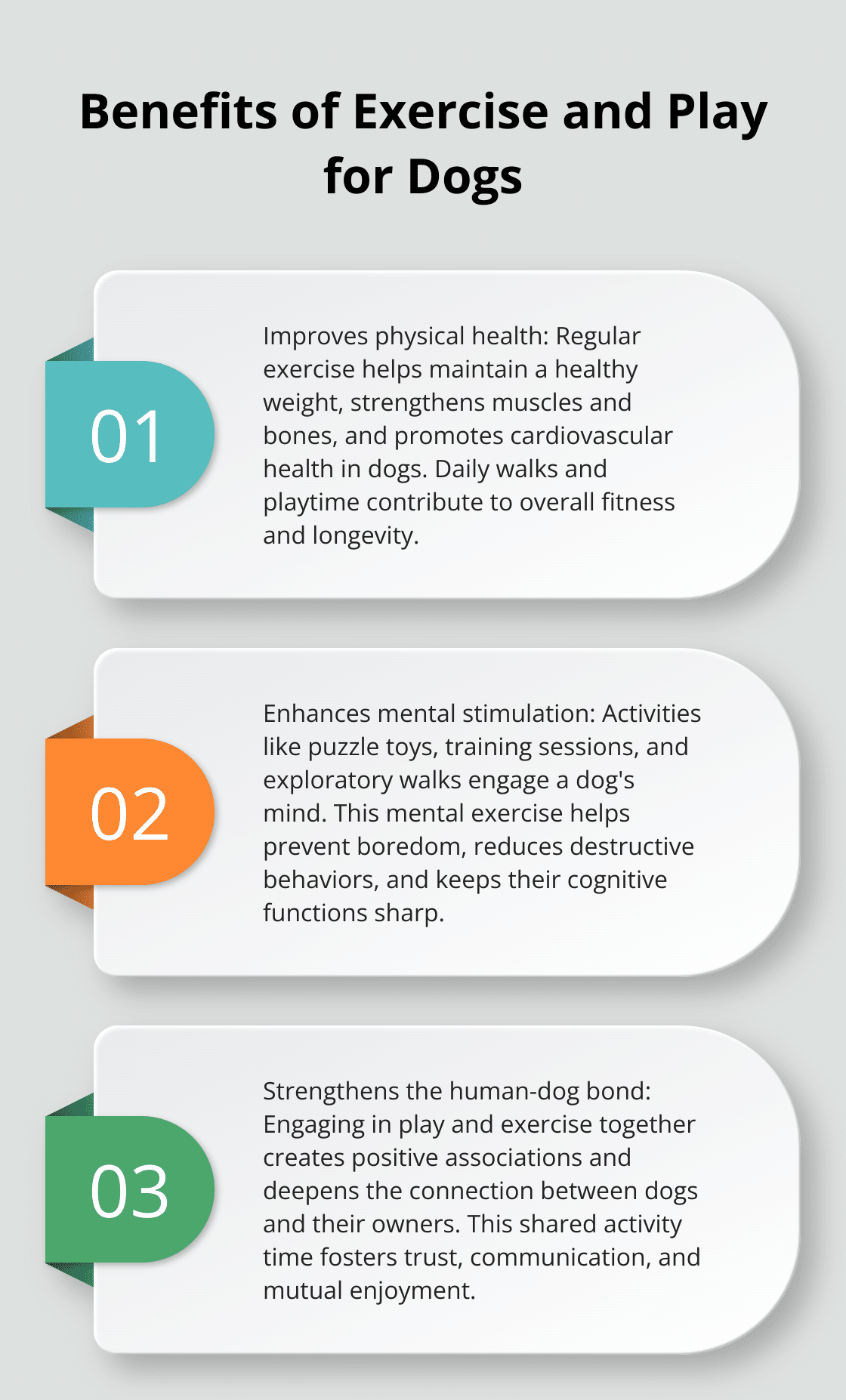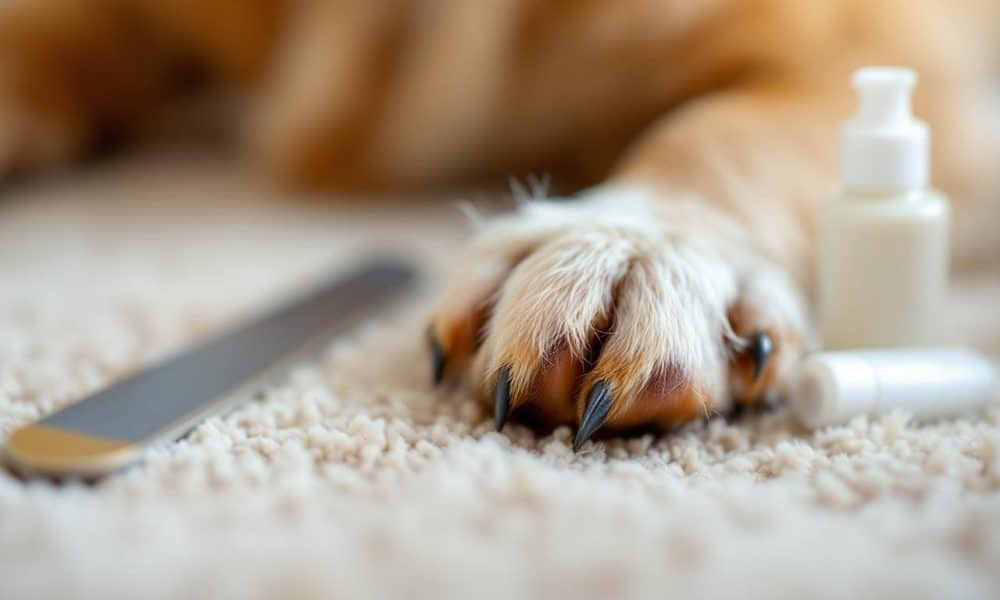
“This post contains affiliate links, and I will be compensated if you make a purchase after clicking on my links.”
At DogingtonPost, we know that keeping your furry friend happy and healthy is a top priority for every dog owner.
A well-rounded approach to dog care involves several key areas, including nutrition, exercise, and grooming.
In this guide, we’ll share essential dog maintenance tips to help you provide the best care for your canine companion.
What Should Dogs Eat?
Choosing the Best Dog Food
The foundation of your dog’s health starts with their diet. When selecting dog food, prioritize options with real meat as the first ingredient. Steer clear of products containing artificial preservatives, colors, or flavors. The Association of American Feed Control Officials (AAFCO) establishes nutritional standards for pet food. Always opt for foods that meet AAFCO guidelines.
A high-quality dog food typically lists “chicken” or “beef” as the primary ingredient, followed by whole grains or vegetables. Avoid foods that prominently feature “meat by-products” or “corn” in their ingredient list.
Mastering Portion Control
Overfeeding is a widespread issue among dog owners. Scientific research has shown that an adult dog’s daily diet can contain up to 50% carbohydrates by weight, including 2.5–4.5% from fiber. However, this requirement varies based on age, activity level, and health status.
Use measuring cups to accurately portion out food. For a 50-pound dog, this might translate to about 2 to 3 cups of dry food per day (split into two meals). Adjust portions according to your dog’s weight and your veterinarian’s recommendations.
The Importance of Water
Water is an essential nutrient that dogs need constant access to. Replace your dog’s water daily and clean their bowl regularly to prevent bacteria growth. A general guideline is that dogs require about an ounce of water per pound of body weight each day.
The Role of Supplements
Most dogs on a balanced diet don’t require additional supplements. However, some may benefit from specific additions. Older dogs might need glucosamine for joint health, while dogs with skin issues could benefit from omega-3 fatty acids.
Always consult your veterinarian before introducing any supplements to your dog’s diet. They can recommend the right products based on your dog’s specific health needs.
Tailoring Diet to Individual Needs
Every dog is unique, and what works for one might not work for another. Factors such as breed, age, and health conditions can influence dietary needs. For instance, large breed puppies require specially formulated food to support their rapid growth without putting excessive strain on their developing joints.
Regular check-ups with your veterinarian can help ensure your dog’s nutritional needs are being met. They can provide personalized advice on diet adjustments as your dog ages or if health issues arise.
Now that we’ve covered the basics of canine nutrition, let’s move on to another critical aspect of keeping your dog happy and healthy: exercise and mental stimulation.
How Exercise and Play Boost Your Dog’s Well-being
The Power of Daily Walks
Regular walks are essential for your dog’s physical and mental health. Try to walk your dog for at least 30 minutes per day, split into two sessions if needed. High-energy breeds (like Border Collies or Australian Shepherds) require 60-90 minutes of physical activity each day. Allow your dog to sniff and explore during walks to engage their mind and provide mental stimulation.
Playtime: More Than Just Fun
Make playtime a part of your daily routine. A game of fetch, tug-of-war, or hide-and-seek provides both physical exercise and mental engagement. Some dogs benefit from a daily play session lasting only a few minutes, while on other days, depending on the activity or game, you might play with your dog for longer. This burns energy and strengthens your bond with your pet.

Mental Workouts with Puzzle Toys
Puzzle toys keep your dog’s mind sharp. These toys challenge your dog to figure out how to access treats or kibble. Start with simple puzzles and increase difficulty gradually. Dedicate 10-15 minutes daily to puzzle play for optimal mental stimulation.
Training: Exercise for the Mind
Regular training sessions provide mental exercise and reinforce good behavior. Spend 5-10 minutes daily on training, focusing on new commands or reinforcing existing ones. Use positive reinforcement techniques (rewards with treats or praise) for correct responses.
Social Butterflies: The Importance of Dog Interactions
Socialization is key to a well-rounded dog. Arrange playdates with other dogs or visit dog parks regularly. The American Veterinary Medical Association suggests that socialization can reduce fear and aggression in dogs. Start with short, controlled interactions and gradually increase duration as your dog becomes more comfortable.
Every dog is unique, so tailor these activities to your dog’s age, breed, and energy level. Always consult with your veterinarian before starting a new exercise routine (especially for senior dogs or those with health conditions). Now that we’ve covered exercise and mental stimulation, let’s move on to another important aspect of dog care: grooming and hygiene.
How to Groom Your Dog Like a Pro
Regular grooming benefits all dogs, regardless of coat type. It keeps your pet’s coat clean and free of tangles, reduces shedding, and prevents potential health issues like skin infections. Let’s explore the key aspects of dog grooming to help you keep your furry friend looking and feeling their best.

Brush Your Dog Regularly
Short-haired breeds need brushing 1-2 times a week. Long-haired or double-coated breeds require daily brushing to prevent matting and reduce shedding. Use a brush appropriate for your dog’s coat type (slicker brushes for long-haired dogs, bristle brushes for short-haired breeds).
Brushing stimulates blood flow to the skin, distributes natural oils throughout the coat, and allows you to check for any lumps, bumps, or skin issues. It also serves as a great bonding activity!
Bathe Your Dog Appropriately
The frequency of baths depends on your dog’s lifestyle and coat type. Most dogs only need a bath every 2-3 months. Excessive bathing can strip natural oils from their skin, leading to dryness and irritation. Always use dog-specific shampoos (human shampoos are too harsh for canine skin).
Dogs with skin conditions might need medicated shampoos. Consult with your vet to determine the best bathing schedule and products for your dog’s specific needs.
Care for Your Dog’s Teeth
Dental health plays a vital role in your dog’s overall well-being. Daily brushing is best, but if that’s not possible, brushing several times a week can be effective. Use a dog-specific toothbrush and toothpaste (never use human toothpaste as it can harm your dog if swallowed).
If your dog resists tooth brushing, dental chews can help. However, they don’t completely replace brushing. Schedule regular dental check-ups with your vet (most dogs show signs of periodontal disease by age three, making preventive care essential).
Trim Your Dog’s Nails
Long nails can cause discomfort and even lead to skeletal damage over time. If you hear your dog’s nails clicking on hard floors, it’s time for a trim. Most dogs need their nails trimmed every 3-4 weeks.
If you’re not comfortable trimming your dog’s nails yourself, seek professional help. Many groomers and vets offer nail trimming services. For at-home trimmers, invest in good quality nail clippers and styptic powder (in case of accidental bleeding).
Clean Your Dog’s Ears
Ear care is particularly important for floppy-eared breeds, which are more prone to ear infections. Check your dog’s ears weekly for redness, swelling, or unusual odor. Clean them as needed with a veterinarian-approved ear cleaner.
Never insert anything into your dog’s ear canal – this can cause serious damage. Instead, use a soft, damp cloth to gently clean the visible part of the inner ear.
Final Thoughts
Keeping your dog happy and healthy demands dedication, but the rewards are immeasurable. You set the foundation for a thriving, joyful canine companion when you focus on proper nutrition, regular exercise, mental stimulation, and consistent grooming. Every dog is unique, so tailor these dog maintenance tips to your pet’s specific needs.
Consistency plays a vital role in all aspects of dog care. Establish routines for feeding, exercise, and grooming to help your dog feel secure and maintain optimal health. Regular veterinary check-ups catch potential issues early and ensure your dog stays in top shape.
We at DogingtonPost commit to helping you provide the best care for your furry friend. For more expert advice on dog maintenance, visit our website. Together, we can ensure our dogs lead happy, healthy lives filled with love and companionship.







